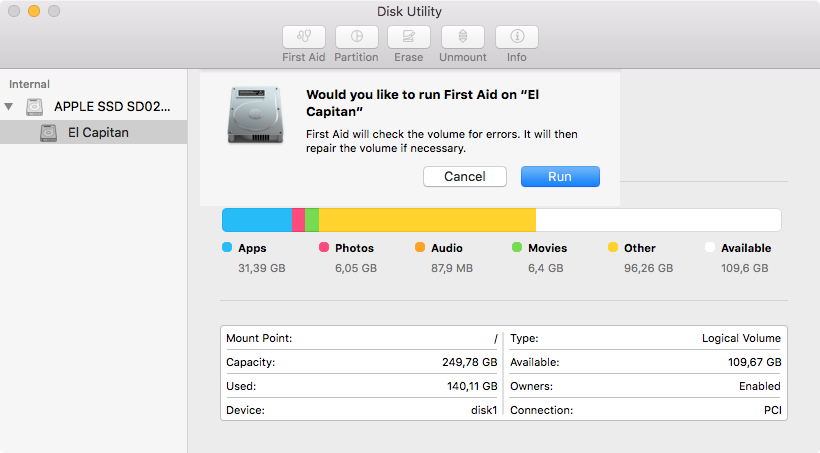
- #BOOT MAC FOR DISK UTILITIES INSTALL#
- #BOOT MAC FOR DISK UTILITIES PRO#
- #BOOT MAC FOR DISK UTILITIES MAC#
- #BOOT MAC FOR DISK UTILITIES WINDOWS#
#BOOT MAC FOR DISK UTILITIES INSTALL#
This is to be avoided, turn off power to abort, as the macOS it will install is the earlier version that originally shipped with your Mac.
#BOOT MAC FOR DISK UTILITIES MAC#
Caution: If you use (Command + R) and a spinning globe of the world appears, the Mac has not used the Recovery partition but is using Internet Recovery. Either way, if you’ve got a slow Mac, you’ll be seeing that beach ball quite a bit - and you don’t even get a suntan to go with it. Wikipedia calls it the Spinning Pinwheel, and the official name for it is the Spinning Wait Cursor. People call it the Spinning Beach Ball of Death, or the Rainbow Wheel. #BOOT MAC FOR DISK UTILITIES PRO#
Press Command-R during startup to start your Mac from the Recovery System.įor 2018 / 2019 Macbook Pro with the Secure Boot T2 Chip, see the 2018 Macbook Pro Boot from USB instructions.Ī fully encrypted computer with anonymous browsing, ready to use. Depending on the Mac you are using and the version of OS X that is installed, the Recovery System volume (Recovery HD) might not show up in Startup Manager.If the volume contains OS X, start your computer from OS X Recovery and use Disk Utility to repair the volume, or reinstall OS X on the volume using the Recovery System. If you’ve installed an operating system on a drive but it isn’t listed, the volume you’re trying to start from might need repair.Volumes that don’t contain a valid operating system aren’t listed in Startup Disk or Startup Manager.
#BOOT MAC FOR DISK UTILITIES WINDOWS#
Make sure you’ve installed an operating system, like OS X or Windows on the drive you’re trying to start from. If you’re using an external drive, make sure it’s connected and turned on. If you don’t see the volume you want to start your computer from, check the following: Hold down the Command and R keys on your keyboard until you see the Apple logo appear onscreen. 
To start your Mac from the Recovery System, use these steps: You can also start your Mac from OS X Recovery or Internet Recovery if your Mac was manufactured after 2011.
From the menu that appears, choose Restart in OS X. In Windows, click the Boot Camp icon in the system tray. If you have started up your Mac in Windows using Boot Camp, you can use the Boot Camp system tray to switch your startup disk default back to OS X. Startup Manager automatically adds bootable volumes as you connect them. You can also attach FireWire or USB external hard drives that contain an operating system to add to the list of startup volumes. If you have an optical drive connected to your computer, you can insert an installation disc to see it in Startup Manager. Double-click or press the Return key to start up your Mac from the volume you selected. Use your mouse or trackpad, or left and right arrow keys to select the volume you want to use. If you don’t see the volume you want to use, wait a few moments for Startup Manager to finish scanning connected drives. After a few seconds, the Startup Manager appears. Immediately press and hold the Option key. Use these steps to choose a startup disk with Startup Manager: Startup Manager allows you to pick a volume to start from while the computer is starting up. Temporarily change your startup disk with Startup Manager The next time you start up or restart your computer, your Mac starts up using the operating system on the selected volume. Select your startup disk from the list of available volumes.  Click the Startup Disk icon in System Preferences, or choose View > Startup Disk. From the Apple menu choose System Preferences. Set the default startup disk You can change the startup disk your Mac automatically uses from System Preferences.
Click the Startup Disk icon in System Preferences, or choose View > Startup Disk. From the Apple menu choose System Preferences. Set the default startup disk You can change the startup disk your Mac automatically uses from System Preferences.






 0 kommentar(er)
0 kommentar(er)
